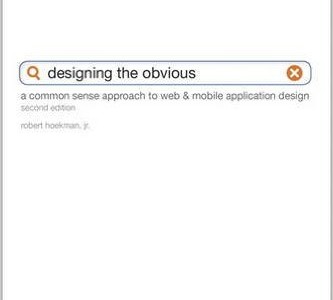Designing The Obvious
Designing the Obvious
A Common Sense Approach to Web and Mobile Application Design
SECOND EDITION
My favorite excerpt:
Four Modes of Seeking Information and How to Design for Them
Known item:
In this search method, users know what they’re looking for and know the words they need to look for to stay on the trail. Typical support methods for this type of information-seeking are navigation, sub-navigation, and search features.
Exploratory
In exploratory searching, users may know what they’re looking for, but may be unable to put it in words in a way that allows them to jump on a trail and start following it. In these cases, presenting related information can be of great help to users, as it increases the odds that they will stumble across the right words and go into known-item mode.
Don’t know what you need to know
This mode of seeking is employed by users who may think they need to find one thing, when in fact they need to find something else. Or they may be scavenging the application for no particular reason, just browsing their way around to see what comes up. In this mode, short, concise answers that link to deeper explanations can be helpful so users don’t waste a lot of time reading through the wrong information.
Re-finding
This mode becomes important when users are attempting to find something they already found before. One way to address this mode of seeking is to enable users to mark their favorite screens somehow or use the system to remember recent activity.







Comments are closed.